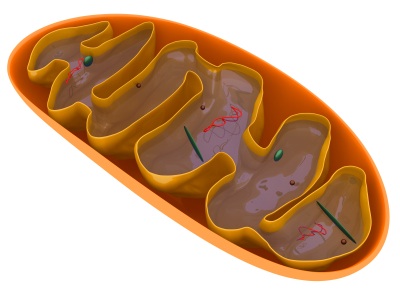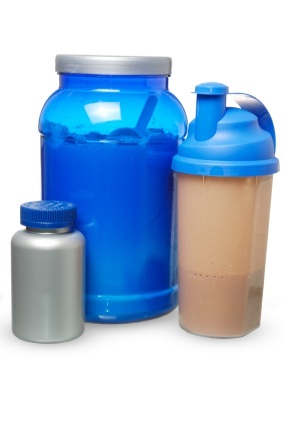Evolution of cell’s power plant genome

iStockphoto.com
To explore how variations in mtDNA have evolved, David Samuels, Ph.D., and colleagues combined detailed human mtDNA trees with calculations of how pathogenic (or detrimental) a single amino acid change to the 13 mtDNA-encoded proteins would be (represented by a “pathogenicity score”).
In the April 8 American Journal of Human Genetics, they show that variants with high pathogenicity scores are rarer in older branches of the tree (they are evolutionarily selected against). Variants that appear multiple times in the tree had significantly lower pathogenicity scores than those that appear only once. The investigators also compiled a list of all possible amino acid variations and their pathogenicity scores, generating a tool that can be used to evaluate mtDNA variants and mutations associated with mitochondrial diseases, aging and cancer.
— Melissa Marino
Protein problem after gastric bypass
Although protein supplementation is recommended following gastric bypass surgery to avert protein deficiency, such supplements may actually have undesirable metabolic effects, suggests a recent study led by Ronald Clements, M.D., in the Vanderbilt Center for Surgical Weight Loss.

iStockphoto.com
Patients undergoing gastric bypass surgery for weight loss risk becoming protein deficient because of their limited stomach size and an intolerance to eating meat. Protein supplementation is therefore recommended, but how these protein supplements affect the beneficial metabolic and hormonal changes resulting from gastric bypass is unclear.
In the current study, Clements and colleagues found that gastric bypass patients taking a commercial protein supplement (containing the amino acids glutamine, arginine and a leucine metabolite) had worse measures of glucose regulation, insulin sensitivity and inflammation compared to those not taking supplements. Weight loss was similar in both groups.
The findings, reported in the April Journal of the American College of Surgeons, suggest that physicians may need to focus on quality and not just quantity of protein supplementation for optimal nutrition after gastric surgery.
— Melissa Marino
Enzyme overlap generates new signals
Two newly discovered lipid signaling molecules may have roles at sites of inflammation, Claus Schneider, Ph.D., and colleagues report in the April 26 Proceedings of the National Academy of Sciences.
The enzymes COX-2 and 5-LOX initiate the production of prostaglandins and leukotrienes, respectively – lipid compounds that have inflammatory and immune system-regulatory effects in both normal physiology and disease (e.g. atherosclerosis, cancer). The COX-2 and 5-LOX pathways were previously considered distinct, but the current research shows they overlap: COX-2 can act on a product of 5-LOX to produce two new “hemiketal” compounds called HKD2 and HKE2 (they are structurally similar to the prostaglandins PGD2 and PGE2).
HKD2 and HKE2 were produced in activated human white blood cells, and their synthesis was blocked by inhibitors of COX-2 or 5-LOX. HKD2 and HKE2 stimulated migration of vascular endothelial cells and formation of tubular structures, suggesting that these new lipid signals may promote blood vessel formation at sites of inflammation.
— Leigh MacMillan
Cells open doors for reovirus

courtesy of Terence Dermody, M.D.
In the April Journal of Virology, Bernardo Mainou, Ph.D., and Terence Dermody, M.D., identify the protein kinase Src as an important mediator of reovirus cell entry. The investigators found that chemical inhibitors of Src kinase diminish reovirus infectivity by blocking an early step in the life cycle of the virus. Reovirus co-localizes with Src during cell entry, and reovirus infection activates Src. They also showed that reducing Src levels limits reovirus infectivity, supporting a role for Src in reovirus cell entry.
Understanding how viruses engage Src and other cellular factors to gain access to the cell interior may foster the development of broadly active antiviral drugs that inhibit key steps in the entry process.
— Leigh MacMillan
We welcome suggestions for research to highlight in Aliquots. The items should be primary research articles (no reviews, editorials or commentaries) published within the last two months in a peer-reviewed journal. Please send the article citation (PDF if available) and any other feedback about the column to: aliquots@vanderbilt.edu.
Past Aliquots
June 22, 2012
June 8, 2012
May 11, 2012
April 27, 2012
April 13, 2012
March 30, 2012
March 16, 2012













